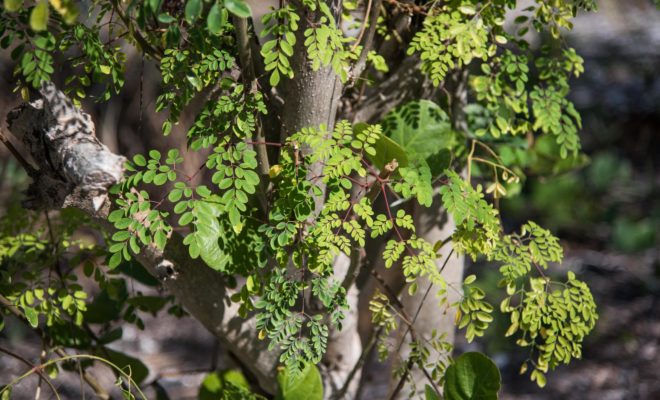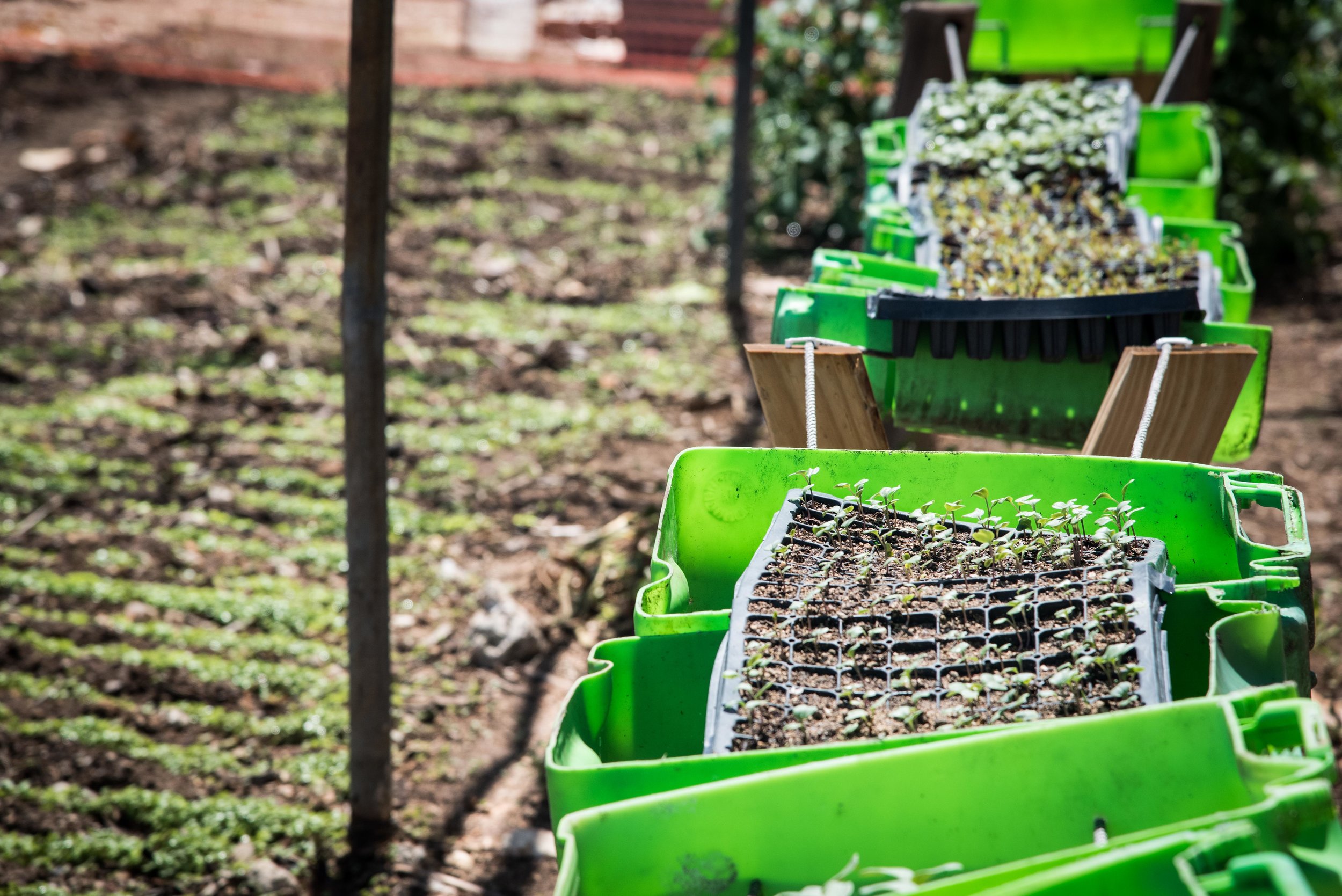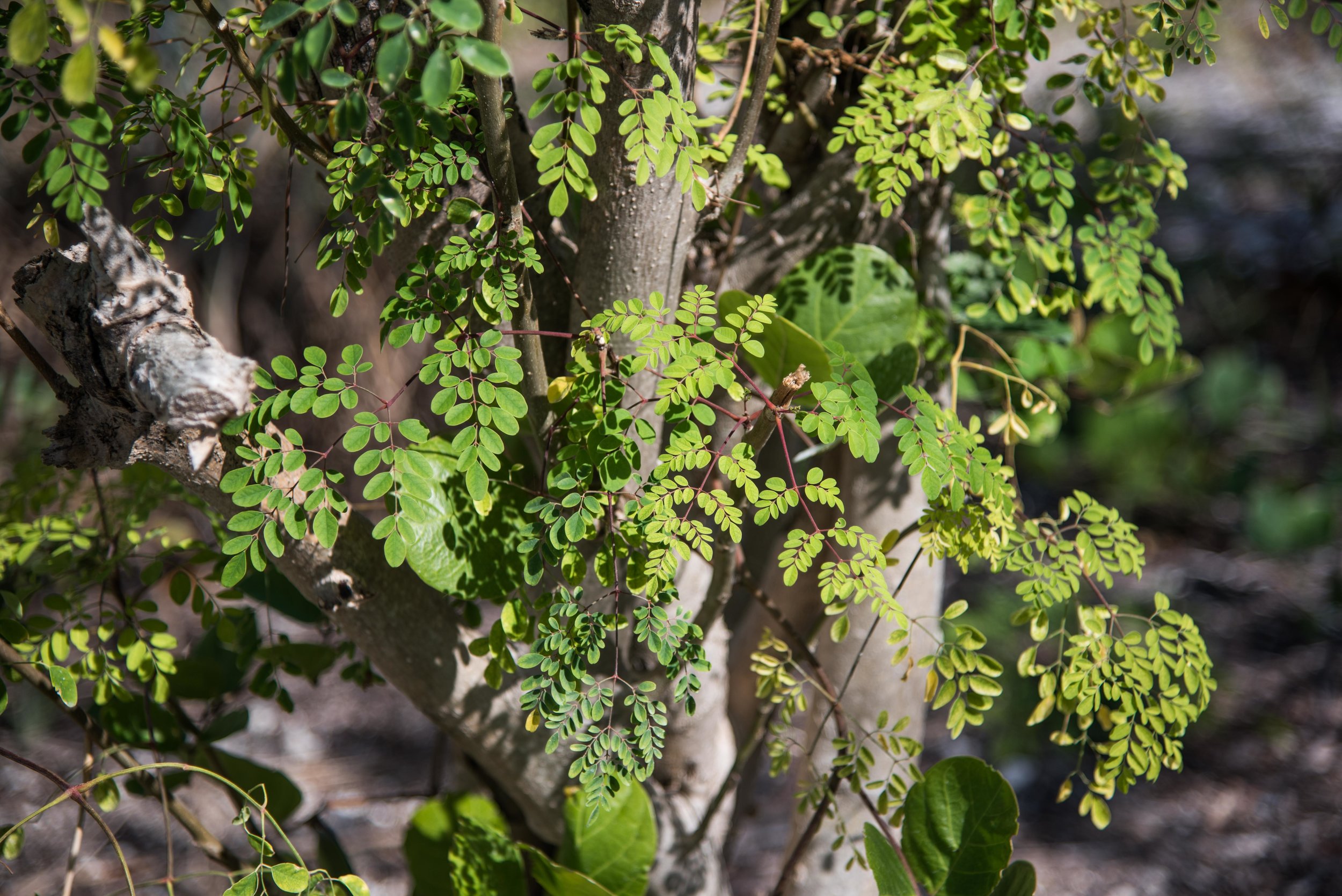During academic week three, the Permaculture Research team focused their sights on plant science and botany. Our primary projects this week included: pruning the CSD orchard, making our own moringa biofertilizer, and becoming more familiar with subtropical botany and local plant identification.
Pruning:
Here at The Island School, our campus is covered with a variety of native and naturalized plants and trees all serving unique purposes which we try to utilize as much as possible. An end goal of permaculture design and planning is to create an edible campus full of ecological functions. The Permaculture team worked on pruning many of the trees in the CSD orchard. We learned that in order to trim trees properly, one must prune branches that grow inward or cross one another so as to increase airflow and maximize leaf exposure to sunlight.
Plant Identification:
Easy ways to identify plants are by their leaves, buds, twigs, bark and habit, or tree shape. As budding botanists, not only can we now recognize the plants that grow on our campus and South Eleuthera by their leaf-shapes and distinct coloring, we now also know about their diverse purposes and advantages in our community.
Moringa Fertilizer:
Fermented moringa becomes a natural liquid fertilizer.
One unique and valuable plants on campus is called moringa, or the drumstick tree, a specimen touted as the next superfood. The health benefits of the edible leaves and flowers include high doses of vitamin A, B, C, iron, calcium, and phosphorus. The most interesting aspect of our fieldwork this week was creating our own moringa fertilizer to use in our nutrient deficient soils. To do this, we began by stripping the leaves from the moringa branches and scraping them into a bucket of water. Once the bucket was full, we mashed all the leaves into a green paste which we allowed to ferment so as to later became a liquid fertilizer. In the weeks ahead, we will use this batch of fertilizer as a natural, inexpensive, and locally-sourced soil amendment for the seeds we planted earlier in the term.




